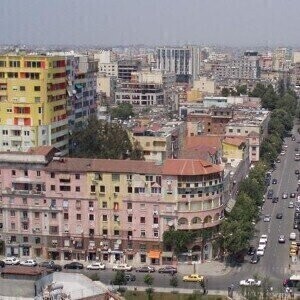Air Monitoring
What is India Doing to Tackle Air Pollution?
Apr 28 2023
Air pollution is one of the most pressing environmental problems of our time, with millions of premature deaths linked to it globally every year. India is one of the countries hit hardest by this problem, with some of the most polluted cities in the world. According to the 2021 World Air Quality Report released by the Swiss air quality technology company IQAir, Delhi has been the most polluted capital city for the fourth year in a row, with air pollution levels over 10 times the safe levels prescribed by the World Health Organization (WHO) for seven months in 2021.
Air pollution is a major public health concern in India, with toxic air being one of the top health risk factors in the country. The toll it takes on the economy is estimated at around USD 150 billion annually. Particulate matter that is 2.5 micrometres or smaller (PM2.5) is one of the most dangerous air pollutants, and its concentration in India's cities is among the highest in the world. These particles come from various sources such as car engines, power generation, industrial processes, and construction.
Delhi is a prime example of the problem, with the city registering a 14.6% increase in toxic fine particulate matter compared with the previous year. This increase exposes the city's 32 million residents to air so bad that their life expectancy may be reduced by as much as nine years due to the toxins they inhale daily. Delhi's air pollution puts it at the top of the list of the world's most polluted capital cities.
Despite India's roll-out of several policies targeting various sources of air pollution, its air quality has consistently worsened. The flagship policies, such as the National Clean Air Programme (NCAP), launched in 2019 to improve air quality in over 100 of India's most polluted cities, were doomed from the start due to underfunding and poor design. According to experts, three years after its launch, the targeted cities have shown little progress in terms of reducing air pollution, and in some cases, pollution has increased.
NCAP was badly designed because it required cities to reduce pollution within their boundaries, while the cities cannot control emissions coming from outside. "While cities have geographical boundaries, there is no boundary in the air," said a senior project manager who has worked closely with authorities to help draft India's air pollution policies. As a result, officers in the Delhi government have lost faith in NCAP. They feel that even if they do their part, if the surrounding states don't, the air quality is not going to improve.
Tackling Delhi's Air Pollution Crisis with Better Monitoring
Delhi is setting an example of understanding the nature and dynamics of the toxic air enveloping its community. Over the past 10 years, there have been improvements in air quality monitoring, with traditional monitors installed in many more places. The government is also considering the use of satellite data to identify areas that require urgent attention.
Pollution forecasting technologies are also increasingly available, but turning information into effective action is the problem. For the future, experts are imagining a system that combines live emissions data with data on pollution sources. The system would not only return detailed information but would analyze it, providing targeted recommendations on viable emergency measures, such as limiting traffic or halting construction work for a few days before the bad air strikes.
Entrepreneurs Tackling Air Pollution in India
The coronavirus pandemic has highlighted just how urgent tackling air pollution is, treating it as a public health risk as well as a climate threat. With over 7 million deaths worldwide each year due to air pollution, it is a problem that requires immediate and comprehensive action.
Entrepreneurs like Angad Daryani and his start-up Praan are offering innovative solutions to this crisis. Their low-cost air purification devices, which capture pollutants and turn them into building materials, have the potential to clean up India's skies and improve the health and well-being of millions of people.
However, to truly address the air pollution crisis in India, a coordinated effort is needed. Government policies, such as the National Clean Air Programme, must be properly funded and designed to address the root causes of pollution. This includes addressing emissions from outside of city boundaries, such as industrial emissions and crop burning.
In addition to policy changes, there must also be increased investment in specialized workforces and citizen engagement. This includes better monitoring and pollution forecasting technologies, as well as targeted recommendations on emergency measures, such as limiting traffic or halting construction work during periods of high pollution.
It is also crucial that the most vulnerable populations, such as low-income households and those living near industrial areas and highways, are not left behind. The innovative solutions developed by entrepreneurs like Angad Daryani must be made accessible to those who need them the most.
Tackling air pollution in India is a complex challenge, but one that must be addressed urgently. The health and well-being of millions of people depend on it. With innovative solutions and comprehensive policy changes, it is possible to create a cleaner, healthier future for all.
Digital Edition
IET 34.2 March 2024
April 2024
Gas Detection - Biogas batch fermentation system for laboratory use with automatic gas analysis in real time Water/Wastewater - Upcycling sensors for sustainable nature management - Prist...
View all digital editions
Events
Apr 22 2024 Hannover, Germany
Apr 22 2024 Marrakech, Morroco
Apr 23 2024 Kuala Lumpur, Malaysia
Apr 23 2024 Kintex, South Korea
Apr 23 2024 Edmonton, AB, Canada


















